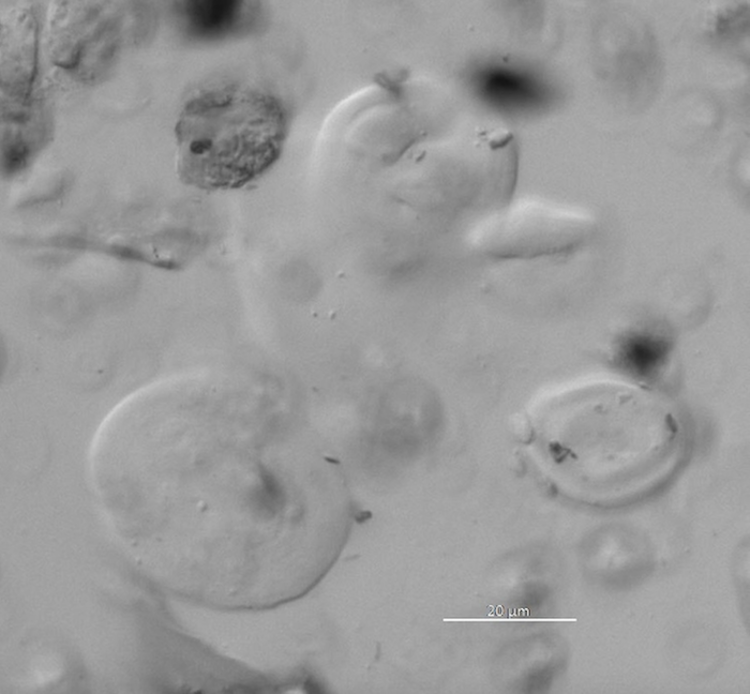SHAANXI PROVINCE, China — Pottery has been a part of human civilization forever, which means that old pots often contain some revealing things about our past. In the case of one archeological dig in China, pottery contained some of the skunky-est beer on Planet Earth.
Above image: Gelatinized starch collected from the funnel pictured below.
Researches with Stanford University recently unearthed what could be an ancient brewery near a river in the Shaanxi province of China. If they’re correct, the 5,000-year-old Mijiaya site could be evidence that beer was an important commodity in the region some 1,000 years earlier than was originally thought. This is interesting because, along with pottery, beer is one of those commodities that indicates the development of a civilization. It’s also rather touching that the supposed beer recipe indicates both Eastern and Western influences.

Diagrams of some of the artifacts found on site.
The site, which contained the jars, some congealed beer residue and the remains of a stove, were stored in a pit, which could have been a way to keep the beer cool. The residue shows the presence of barley, broomcorn millet, tubers, and “Job’s tears,” or Chinese pearl barley. The barley is the “wow” ingredient for researchers, who thought it didn’t appear in China until much later. This could mean that this beer was the special private reserve of some elite individuals at the time. The still itself indicates that the art of beer making had come quite a ways prior to that point. From the article on Phys.Org:
“The introduction of Middle Eastern barley into a Chinese drink fits with the special role of fermented beverages in social interactions and as an exotic ingredient which would appeal to emerging elite individuals,” said Patrick McGovern, an expert on biomolecular archeology at the University of Pennsylvania Museum of Archeology and Anthropology.
McGovern, who was not involved in the study, agreed the techniques used for brewing in China were advanced, and that “ancient peoples, including those at Mijiaya, applied the same principles and techniques as brewers do today.”
They knew to use heat to break down carbohydrates, and the underground location of the brew site “is very significant,” he added.

An ancient funnel found at the site.
Some of the material in the residue remains a mystery. There could be ingredients in there that have eluded the researchers, but every brewer deserves to have some trade secrets. Still, it’s possible to guess what the drink tasted like. Researchers said it could a mix of sweet and sour. That puts me in mind of some awful homebrews I’ve had before, but maybe the people who built the ancient brewery were seasoned professionals.
Bill Rodgers is the Managing Editor of cfile.daily.
Do you love or loathe these not-quite contemporary ceramics? Let us know in the comments.

Add your valued opinion to this post.